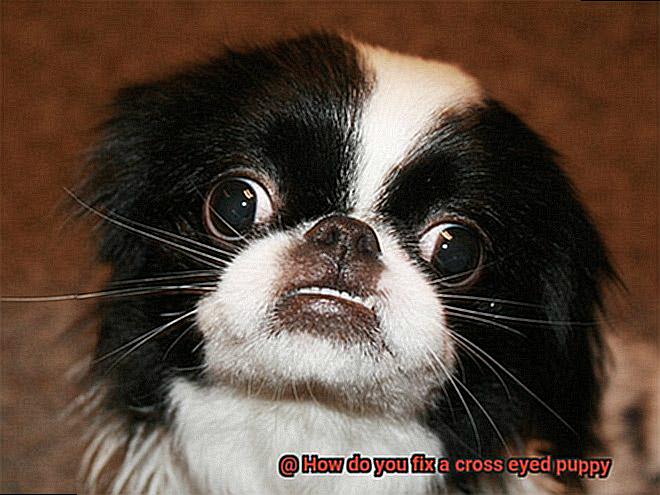How do you fix a cross eyed puppy?
Picture this: you bring home a squishy-faced, wiggly-tailed bundle of joy, only to notice their eyes seem to be playing a game of “follow the leader” in opposite directions. Don’t fret. While it may seem like your pup is stuck in a perpetual game of visual twister, there’s hope for straightening things out.
In this blog post, we’ll unravel the mystery behind cross-eyed puppies and uncover the secrets to fixing their wonky gazes. From understanding what causes those adorable peepers to go astray to discovering the steps you can take to set them right, get ready to embark on a journey towards crystal-clear vision for your four-legged companion.
So, let’s roll up our sleeves, put on our doggy detective hats, and learn how we can help your cross-eyed fur baby see the world through focused eyes once again.
What Causes Cross-Eyed Puppies?
Contents
- 1 What Causes Cross-Eyed Puppies?
- 2 Surgical Intervention for Cross-Eyed Puppies
- 3 Non-Invasive Methods to Fix Cross-Eyed Puppies
- 4 Vision Therapy for Cross-Eyed Puppies
- 5 Addressing Underlying Medical Conditions in Cross-Eyed Puppies
- 6 Patience and Consistency is Key in Fixing a Cross-Eyed Puppy
- 7 Regular Checkups with a Veterinarian are Essential
- 8 Tailoring Treatment Plans for Each Unique Case of Cross-Eyed Puppy
- 9 Conclusion
Crossed eyes, also known as strabismus, can affect puppies of various breeds, including French Bulldogs. If you’ve noticed that your adorable furry friend has crossed eyes, you may be wondering what causes this condition and how it can be treated. In this article, we will explore the factors that contribute to cross-eyed puppies and discuss the treatment options available to help improve their eye alignment.
Causes of Crossed Eyes in Puppies:
- Genetic Factors: Genetics play a significant role in the development of crossed eyes in puppies. If one or both parents have crossed eyes, there is a higher chance of their offspring inheriting the condition. Breeding practices that do not prioritize eye health can increase the likelihood of cross-eyed puppies.
- Developmental Issues: During the early stages of a puppy’s life, developmental issues may arise that affect the proper development of the eye muscles responsible for eye movement. This can lead to difficulty in aligning the eyes correctly. Factors such as improper nutrition, infections, or trauma to the eye area can contribute to these developmental issues.
- Medical Conditions: Certain medical conditions, such as abnormalities in the structure of the eye, nerve damage, or diseases affecting eye function, can also cause crossed eyes in puppies. These conditions may be present at birth or develop later in life.
Treatment Options for Crossed Eyes in Puppies:
- Observation: In some cases, crossed eyes may correct themselves as the puppy grows and their muscles and visual system mature. Regular check-ups with a veterinarian are essential to monitor any changes in eye alignment and determine if intervention is necessary.
- Corrective Lenses or Glasses: For less severe cases, your veterinarian may prescribe corrective lenses or glasses specifically designed for dogs. These aids redirect your puppy’s gaze and gradually encourage proper alignment of the eyes.
- Vision Therapy: Under the guidance of a veterinary ophthalmologist or professional dog trainer, vision therapy involves training your puppy’s eyes through exercises and activities to improve focus and alignment. This therapy can help strengthen the eye muscles and improve eye coordination.
- Surgical Intervention: In more severe cases or when other treatments have been ineffective, surgical intervention may be necessary. Strabismus surgery involves adjusting the eye muscles to realign the eyes properly. This procedure is typically performed by a veterinary ophthalmologist under general anesthesia.
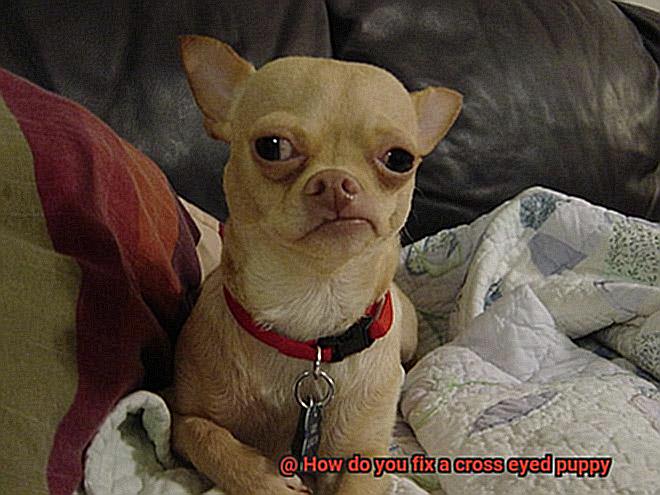
Surgical Intervention for Cross-Eyed Puppies
Every French Bulldog owner wants their furry friend to live a happy and healthy life. If your adorable puppy has crossed eyes, also known as strabismus, you may be wondering about treatment options. While some cases of cross-eyed puppies can be managed with observation or non-surgical methods, severe cases may require surgical intervention.
Here, we will explore the surgical intervention process for cross-eyed puppies, with a specific focus on French Bulldogs.
Understanding Strabismus Surgery:
Strabismus surgery is the most common surgical procedure recommended for cross-eyed puppies. This procedure aims to reposition the muscles responsible for eye movement to correct misalignment and improve their vision. To perform this delicate operation, a veterinary ophthalmologist, a specialist in eye conditions, will carefully work under general anesthesia.
The Surgical Technique:
The specific surgical technique used may vary depending on the underlying cause of the cross-eyed condition. During strabismus surgery, the surgeon carefully adjusts the length or tension of specific eye muscles to achieve proper alignment. To access these muscles, small incisions are made in the conjunctiva, the thin membrane covering the white part of the eye. Through these incisions, the surgeon expertly repositions and secures the eye muscles using sutures before closing the incisions.
Recovery and Post-Operative Care:
The good news is that recovery from strabismus surgery is relatively quick for your French Bulldog puppy. Most puppies can go home the same day or within a day after the procedure.
However, it is crucial to follow all post-operative instructions provided by the veterinary ophthalmologist to ensure a successful recovery. This includes administering prescribed medications to prevent infection and reduce inflammation while monitoring for any complications or signs of discomfort.
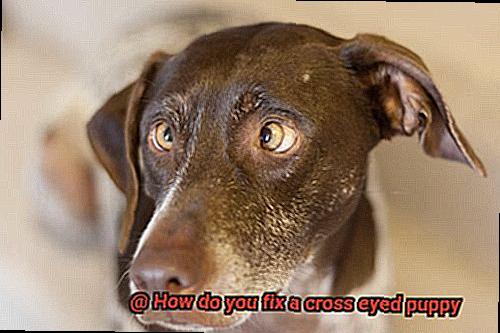
Non-Invasive Methods to Fix Cross-Eyed Puppies
Crossed eyes, or strabismus, can affect our furry friends too. French Bulldogs, known for their adorable squishy faces, are sometimes prone to this condition. While surgery is a common solution, many pet owners prefer non-invasive methods to correct their puppies’ vision. In this article, we’ll explore some non-invasive techniques that can help fix cross-eyed puppies and bring clarity to their world.
Vision Therapy: Unlocking the Potential of Puppy Eyes
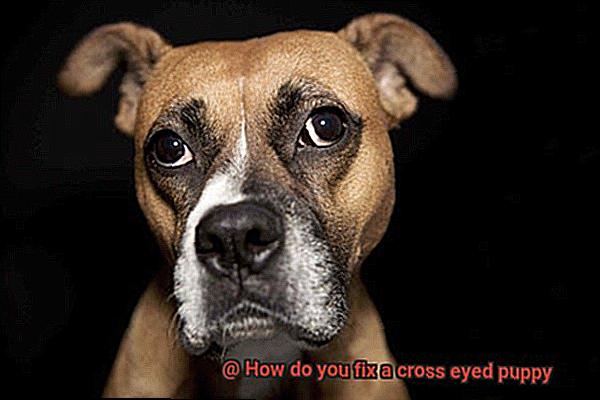
Just like humans, dogs can benefit from vision therapy exercises. These exercises aim to improve the coordination and alignment of the eyes. Under the guidance of a veterinary ophthalmologist or a specialized veterinary clinic, your puppy can engage in activities that stimulate their eye muscles and promote proper alignment. From tracking moving objects to focusing on visual targets, vision therapy offers a holistic approach to enhancing your puppy’s visual abilities.
Corrective Glasses: Stylish Solutions for Canine Vision
Yes, dogs can wear glasses too. Specialized glasses designed for dogs can help align their vision properly. Veterinary ophthalmologists can prescribe these glasses based on your puppy’s specific needs. These glasses not only help correct the cross-eyed condition but also protect their eyes from dust and debris during outdoor adventures. With a wide range of designs and styles available, your pup can look fashionable while enjoying improved vision.
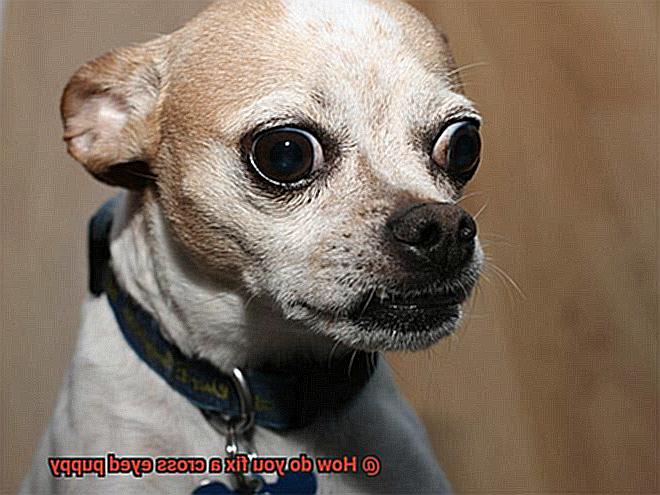
Eye Drops and Medications: Nurturing Healthy Eyes
In some cases, underlying conditions such as inflammation or infections may contribute to strabismus. Non-invasive treatments may involve the use of eye drops or medications to address these conditions, providing relief and potentially improving the alignment of the eyes. By nurturing your puppy’s eye health, you can support their overall well-being and ensure clearer vision.
Regular Veterinary Check-ups: The Path to Progress
Monitoring your puppy’s progress is vital in any non-invasive treatment plan. Regular follow-up visits with a veterinarian will allow them to assess the effectiveness of the treatment and make any necessary adjustments along the way. With their expertise and guidance, you can stay on the right track towards improving your puppy’s vision.
Vision Therapy for Cross-Eyed Puppies
French Bulldogs are beloved companions known for their unique charm and quirks. If you’ve noticed that your furry friend has crossed eyes, you may be wondering how to help them see the world in all its glory.
Fortunately, there’s a non-invasive solution called vision therapy that can work wonders for cross-eyed puppies. In this blog post, we’ll explore the techniques used in vision therapy, its potential benefits, and the importance of regular check-ups with a qualified veterinarian for your French Bulldog’s visual health.
Techniques and Benefits:
- Pursuit Tracking: Imagine gently moving a toy from side to side, encouraging your puppy to follow it with both eyes. This exercise, also known as pursuit tracking, strengthens their eye muscles and improves coordination.
- Vergence Training: Using special lenses or prisms, this technique stimulates your puppy’s visual system and encourages proper eye alignment. It’s like a workout for their eyes.
- Depth Perception and Visual Discrimination: Vision therapy includes activities designed to stimulate depth perception and improve the puppy’s ability to differentiate objects accurately.
- Progress Monitoring and Adjustments: Regular check-ups with a veterinarian specializing in ophthalmology are crucial for tracking progress and making necessary adjustments to the therapy plan. Every puppy is unique, requiring different durations or exercises.
- Enhanced Quality of Life: Vision therapy empowers your French Bulldog to develop better visual skills, leading to improved eye alignment and visual function. While it may not completely “fix” the condition, it significantly enhances their overall quality of life.
By embracing vision therapy, you’re giving your cross-eyed French Bulldog the opportunity to experience a clearer world full of joy and wonder. Consistency and regular veterinary check-ups are key to achieving optimal results.
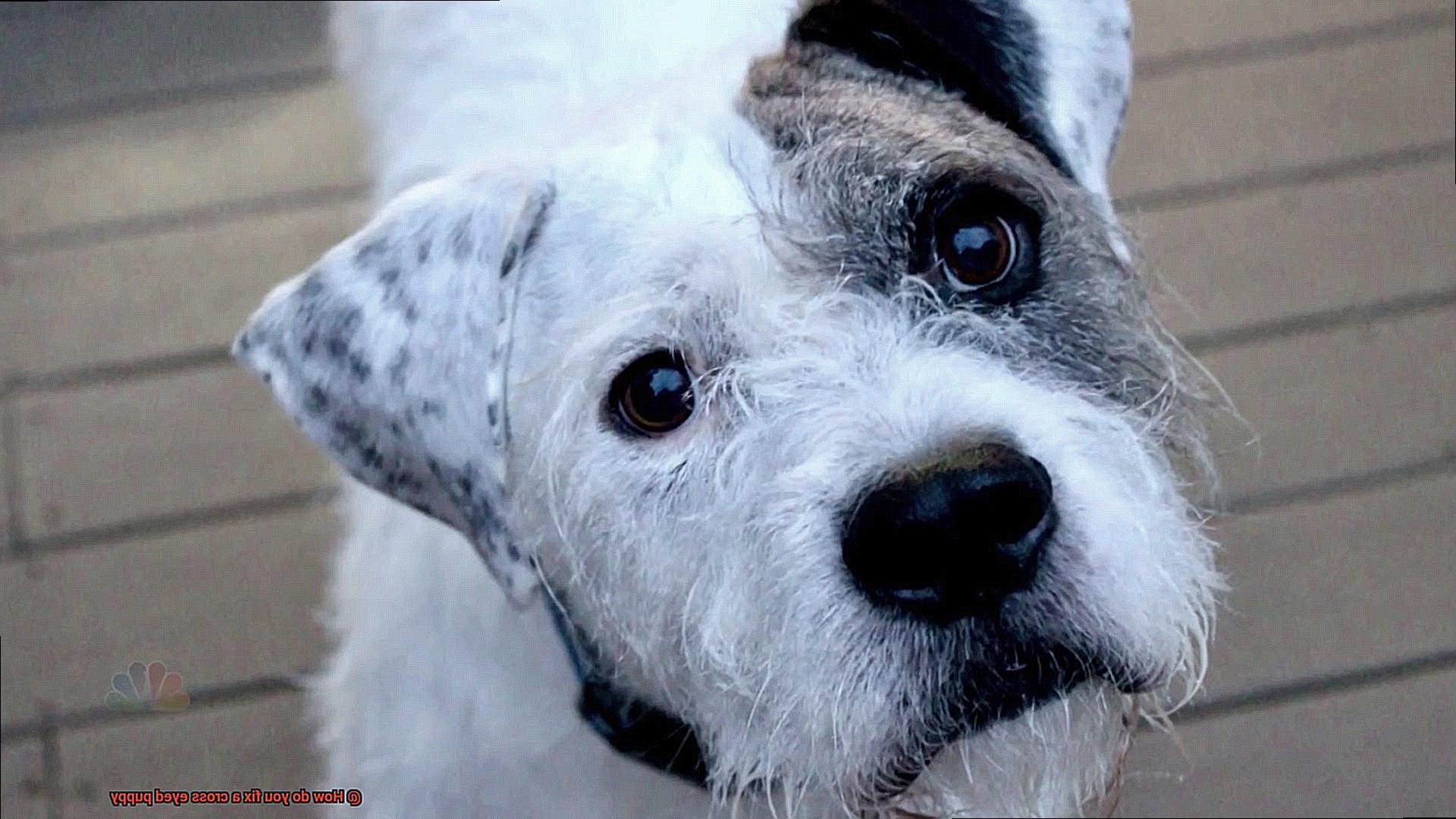
Note: Always consult a qualified veterinarian or veterinary ophthalmologist before starting any vision therapy program for your cross-eyed puppy.
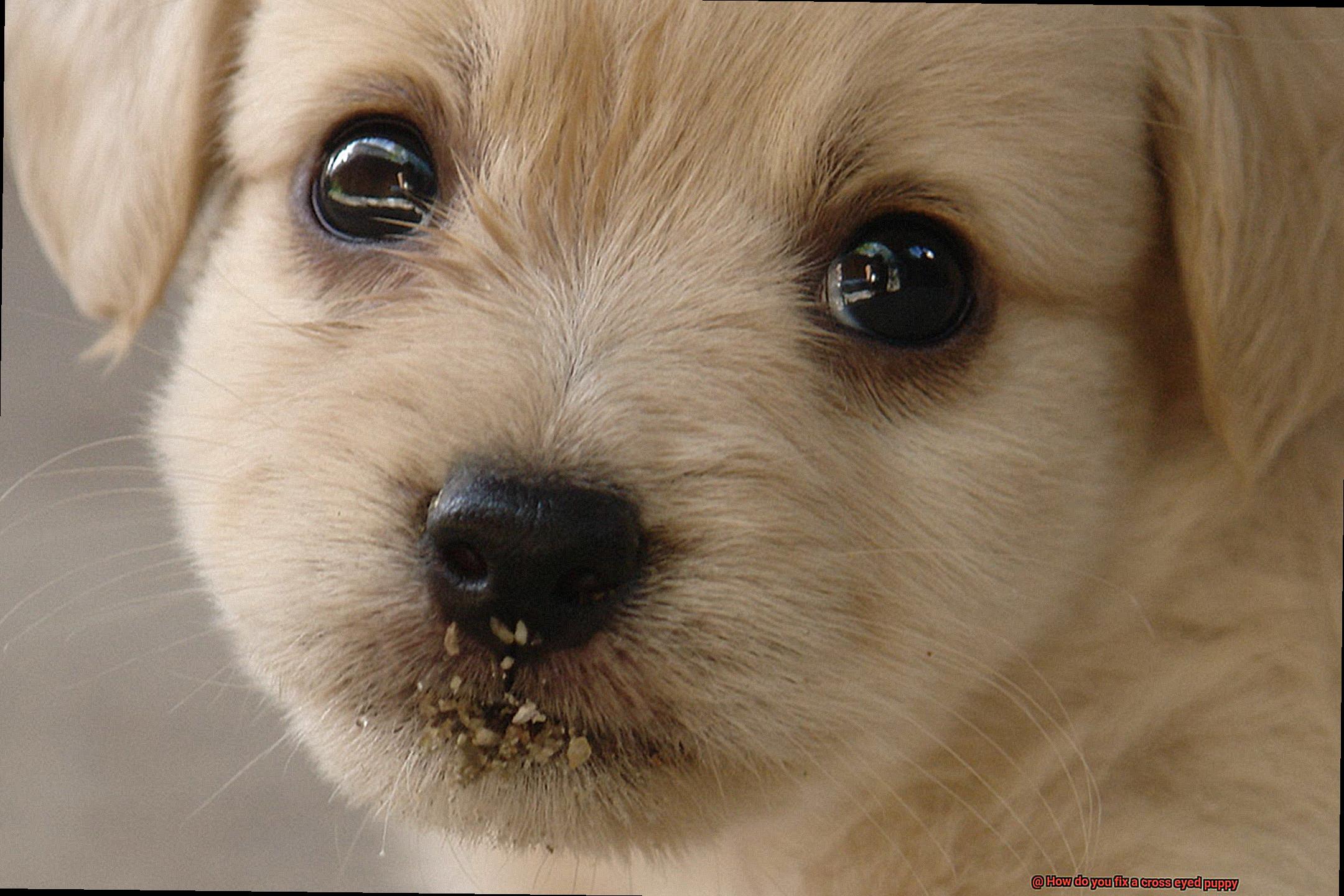
Addressing Underlying Medical Conditions in Cross-Eyed Puppies
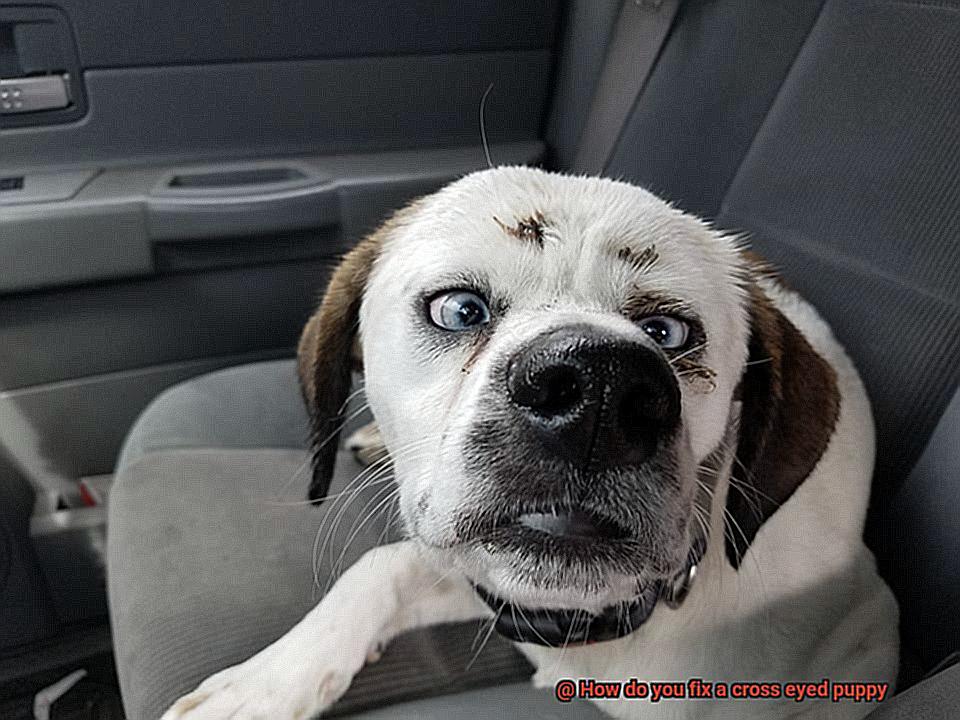
Imagining a life without clear sight is a daunting prospect for anyone, including our beloved cross-eyed French Bulldog puppies. As devoted pet parents, it is our responsibility to ensure their quality of life. The key lies in addressing the underlying medical conditions that contribute to their condition. In this comprehensive article, we will delve into the world of cross-eyed puppies and explore various treatments and interventions tailored specifically for French Bulldogs. With the right approach, we can help our furry friends lead happier, healthier lives.
Identifying the Underlying Medical Conditions:
Cross-eyed puppies may be affected by various underlying medical conditions, each with its unique challenges. Strabismus, caused by weak or imbalanced eye muscles, is a common culprit. Other potential factors include abnormalities in eye or brain structure, nerve damage, or genetic predispositions. To unlock the mystery behind your puppy’s crossed eyes, it is crucial to consult with a veterinarian specializing in ophthalmology. They will conduct a thorough examination and recommend additional tests if necessary, ensuring an accurate diagnosis.
Treatment Options:
The road to improvement begins with understanding the treatment options available for cross-eyed French Bulldog puppies. Treatment plans are tailored to each specific diagnosis. In cases where structural abnormalities or muscle dysfunction are identified, surgery may be required to realign the eyes or adjust muscle tension, ultimately promoting proper eye alignment. Additionally, medications or eye drops may be prescribed to manage inflammation and alleviate associated symptoms. Physical therapy exercises designed to strengthen eye muscles and improve coordination can also play a significant role in enhancing visual function.
Following the Treatment Plan:
To embark on a journey towards better vision and improved quality of life for our cross-eyed puppies, it is essential to adhere diligently to the veterinarian’s treatment plan. Administer prescribed medications as directed and attend regular follow-up visits to monitor progress. These visits provide an opportunity for the veterinarian to make any necessary adjustments to the treatment plan, ensuring optimal results. By actively participating in your puppy’s care, you play a vital role in their recovery and overall well-being.
Patience and Consistency is Key in Fixing a Cross-Eyed Puppy
In this article, we will delve into the importance of patience and consistency in fixing this issue. We understand the deep love and dedication you have for your furry friends, and our aim is to equip you with the knowledge and tools you need to help them overcome their cross-eyedness.
Understanding the Cross-Eyed Condition:
The cross-eyed condition is often caused by weak eye muscles or misalignment, resulting in the puppy’s eyes pointing in different directions. Early intervention is crucial in effectively addressing this issue.
Eye Exercises: Strengthening Visual Muscles
Gentle manipulation and specific object focus exercises play a pivotal role in strengthening the eye muscles of cross-eyed puppies. By repeating these exercises daily, you can promote better eye control and alignment over time.
Regular Veterinary Check-ups: Expert Guidance
Regular veterinary check-ups are essential to assess the severity of the condition and determine the most suitable treatment plan. Additional treatments such as eye drops or medications may be recommended to aid in correcting the misalignment.
Patience: Embrace the Journey
Fixing a cross-eyed puppy’s condition is a gradual process that requires patience. It is important to remember that progress varies from case to case, but with consistent implementation of exercises, regular vet visits, and a nurturing environment, improvements are possible.
Positive Reinforcement and Stress-free Environment:
Maintaining a calm and positive demeanor during training sessions is crucial. Creating a stress-free environment enhances your puppy’s receptiveness to training. Employing positive reinforcement techniques, such as rewards and praise, motivates your puppy to actively participate in the exercises.
Regular Checkups with a Veterinarian are Essential
Regular checkups with a veterinarian are not only important but also essential for the overall health and well-being of your cross-eyed puppy. These checkups serve as a crucial component of responsible pet ownership, allowing the veterinarian to assess your puppy’s condition, provide necessary treatment or recommendations, and monitor their overall health and development.
First and foremost, regular checkups enable the veterinarian to conduct a thorough physical examination of your puppy, with special attention given to their eyes. The veterinarian will evaluate the degree of eye misalignment, check for any signs of inflammation or infection, and examine the overall health of the eyes. These assessments are vital in understanding the underlying cause of your puppy’s crossed eyes and developing an appropriate treatment plan.
Additionally, regular checkups serve as an opportunity for the veterinarian to monitor your puppy’s overall health and development. They will assess factors such as weight, growth rate, dental health, and vaccination status. By keeping track of these aspects over time, the veterinarian can identify any potential issues early on and provide timely interventions. This proactive approach ensures that your cross-eyed puppy receives the necessary care to thrive.
Moreover, preventive care is another critical aspect of regular checkups. The veterinarian will discuss various preventive measures tailored to your puppy’s needs, such as vaccinations, parasite control, and dental care. These preventive measures are essential for maintaining your puppy’s overall health and preventing future complications. Additionally, the veterinarian can provide guidance on nutrition, exercise, and behavior management specific to your cross-eyed puppy’s needs.
Regular checkups also foster open communication between you and the veterinarian. This means you can discuss any concerns or questions you may have about your cross-eyed puppy’s condition. The veterinarian can address your queries, provide education on managing crossed eyes, and offer advice on how to ensure the best quality of life for your furry friend.
Tailoring Treatment Plans for Each Unique Case of Cross-Eyed Puppy
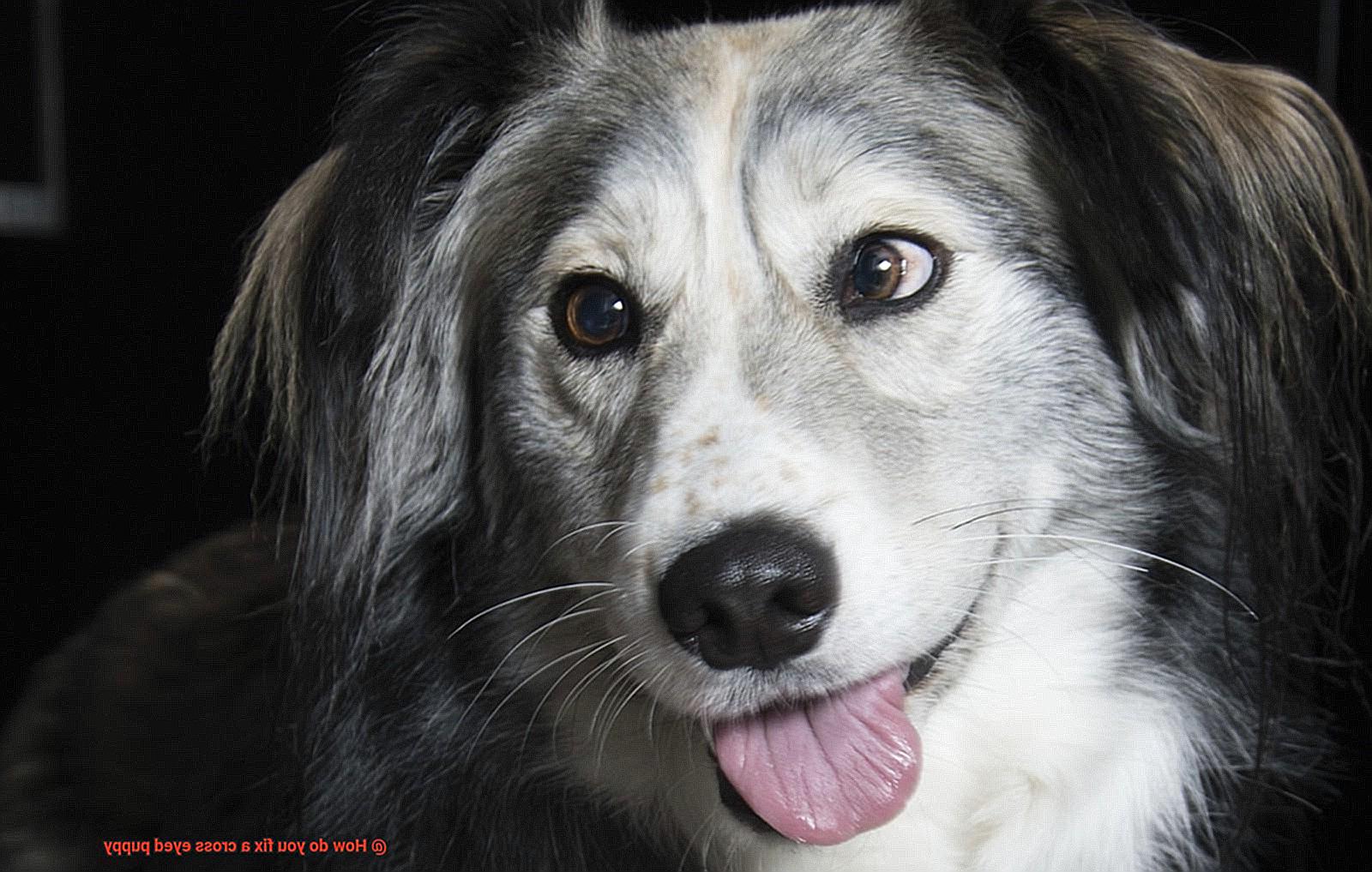
Every cross-eyed puppy deserves a treatment plan tailored to their unique needs. By addressing the underlying causes and providing individualized care, we can significantly improve their quality of life. In this article, we will explore the various approaches and techniques that can be utilized to help these adorable pups see the world clearly.
Consult with a Veterinarian:
The first step in tailoring a treatment plan is to seek guidance from a veterinarian or veterinary ophthalmologist. Through a comprehensive examination, they will identify the root cause of your puppy’s cross-eyed condition, allowing for an appropriate course of action to be determined. This initial consultation is vital in understanding the best approach for your furry friend.
Medical Interventions:
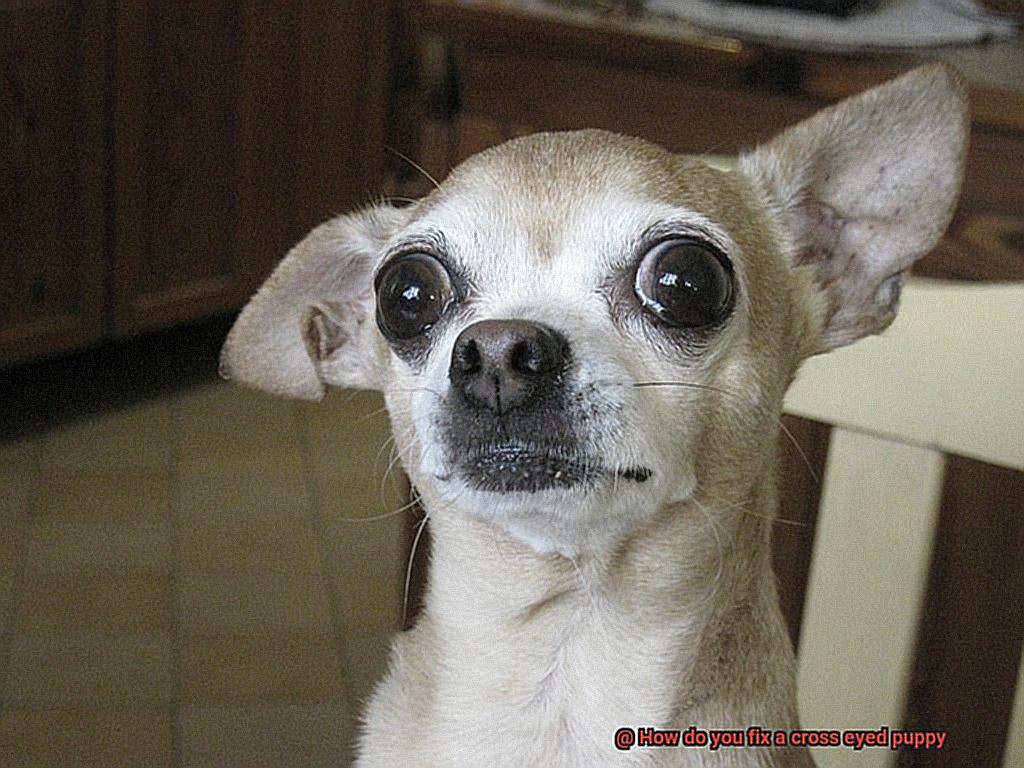
Depending on the diagnosis, medical interventions may be recommended. Antibiotics or anti-inflammatory medications may be prescribed if an underlying health issue is causing the cross-eyedness. By following the veterinarian’s instructions diligently, you can provide your puppy with the necessary treatments, promoting healing and alignment.
Exercises and Physical Therapy:
In cases where muscle weakness or imbalance contributes to cross-eyedness, targeted exercises or physical therapy may be suggested. These activities strengthen the affected muscles over time, gradually improving eye alignment. Your veterinarian will guide you on the proper techniques to ensure effectiveness and safety.
Surgical Intervention:
For severe or persistent cases, surgical intervention may be necessary. The specific procedure will depend on your puppy’s unique needs, potentially involving adjustments to eye muscle tension or realignment of eye position. Prior to surgery, your veterinarian will extensively discuss potential benefits, risks, and expected outcomes.
Supportive Measures:
In addition to medical interventions, creating a supportive environment is crucial for your cross-eyed puppy’s well-being. Minimize eye strain and stress by providing a safe and comfortable space. Avoid activities that exacerbate the condition, such as rough play or exposure to irritants. A balanced diet will also promote overall health, positively impacting your pup’s quality of life.
Regular Follow-up Visits:
To ensure the effectiveness of the treatment plan, regular follow-up visits with your veterinarian are essential. These visits allow for progress monitoring and necessary adjustments to be made. By providing consistent care, you can maximize your puppy’s chances of achieving improved eye alignment.
Patience and Understanding:
Correcting cross-eyedness takes time, and results may vary. It is essential to remain patient and understanding throughout the treatment process. Your veterinarian will provide guidance and support, but managing expectations is crucial. By focusing on improving your puppy’s vision, comfort, and overall well-being, you can provide the best possible care.
4B1j-o75xcs” >
Conclusion
Fixing a cross-eyed puppy requires careful attention and professional guidance. It’s crucial to understand that this is not a DIY project, but rather a task that should be entrusted to experienced veterinarians or ophthalmologists who specialize in animal eye health. These experts will conduct a thorough examination of the puppy’s eyes to determine the underlying cause of the condition. Once the cause is identified, they will develop a personalized treatment plan.
Treatment options for cross-eyed puppies may vary depending on the severity of the condition and its underlying cause. In some cases, simple corrective measures such as eye exercises or medications may be sufficient to realign the eyes over time. However, more severe cases may require surgical intervention.
During surgery, skilled veterinary surgeons will carefully manipulate the muscles responsible for eye movement to correct misalignment. This delicate procedure aims to restore proper alignment and improve the puppy’s vision. Post-surgery, diligent follow-up care is essential to monitor progress and ensure optimal healing.
It’s important to note that fixing a cross-eyed puppy is not an overnight process. Patience and commitment are key throughout the treatment journey. Regular check-ups with your veterinarian or ophthalmologist will help track progress and make any necessary adjustments along the way.
Remember, every cross-eyed puppy is unique, and their treatment plan should be tailored accordingly. So if you notice your furry friend exhibiting signs of crossed eyes, don’t hesitate to seek professional help promptly. With expert care and dedication, you can give your beloved pup the best chance at having healthy and aligned eyes.
